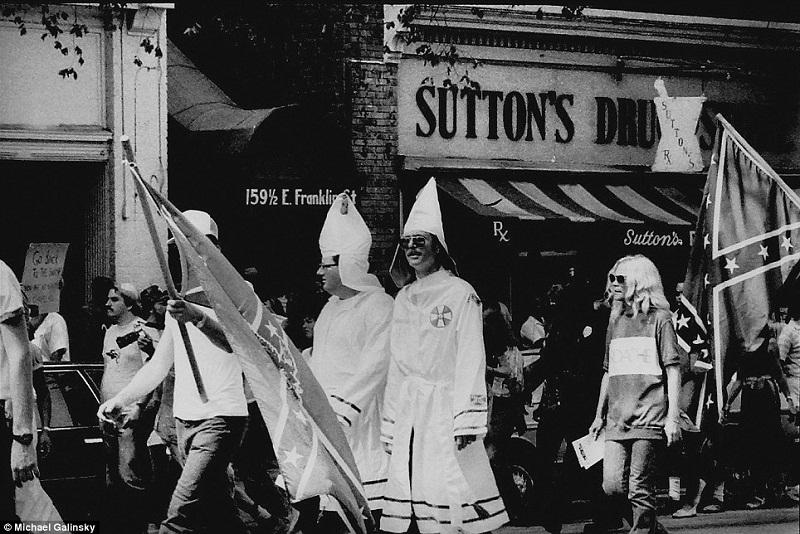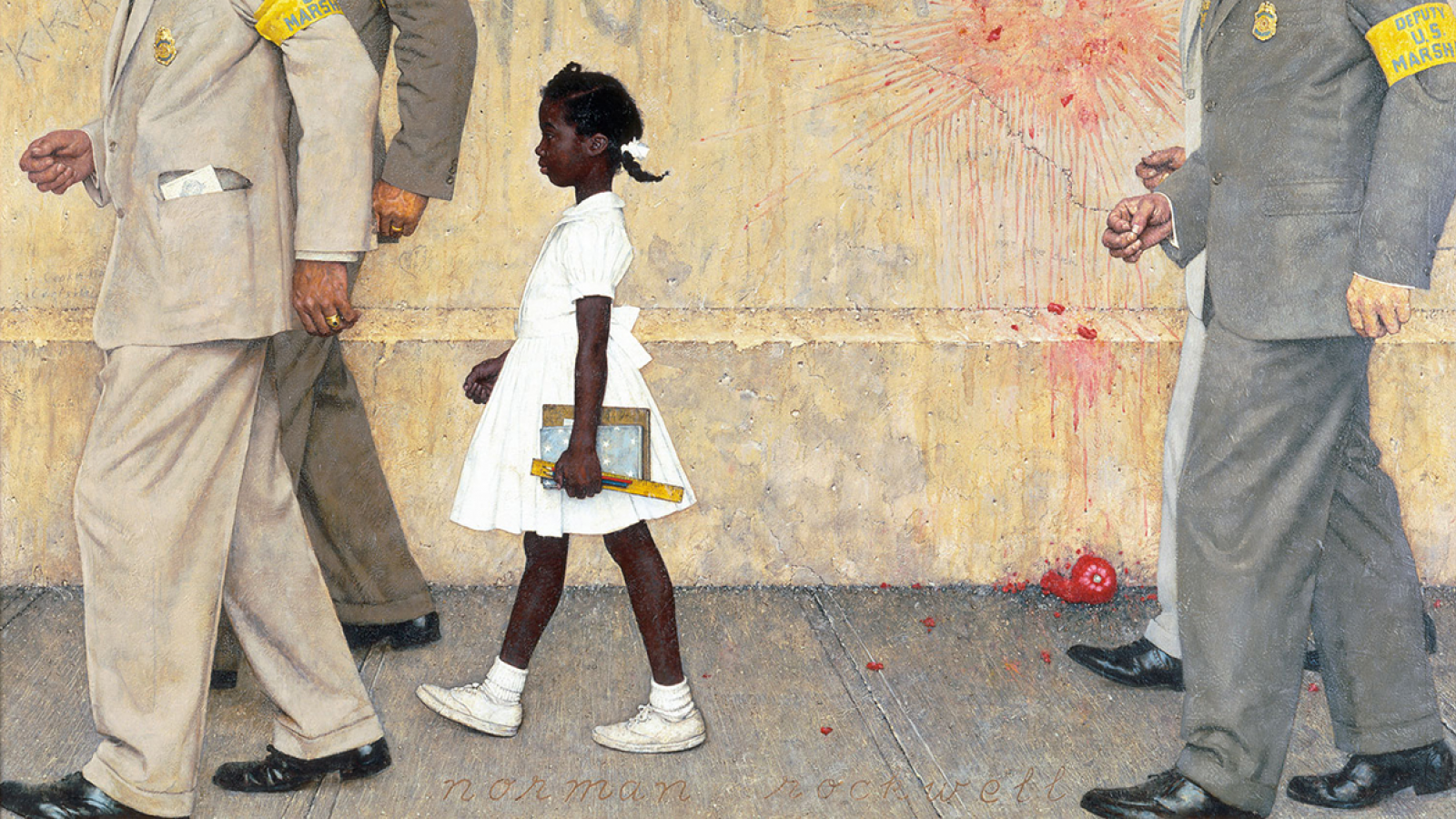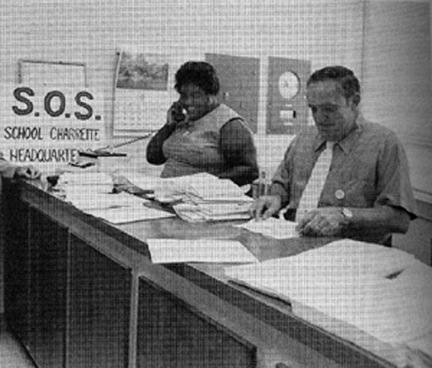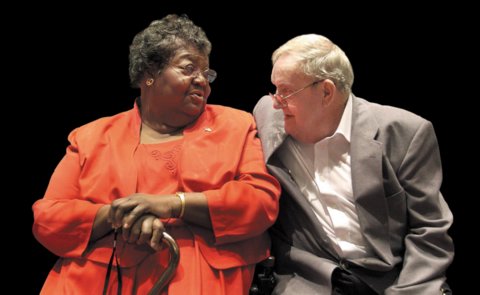
Get On The Same Side
When C.P. Ellis died, a family-only memorial service was held. Ann Atwater, the only friend who had been invited to the service, arrived early and sat in the front row. Ann was from Durham, North Carolina, and was a major force within the country’s civil rights movement. She was infamous for her fiery, tough personality. She was soon approached by a red-faced employee of the funeral home. He whispered, “This service is for Mr. Clairborne Ellis.” Ann nodded and said, “Yes, I know.” There was an awkward pause as the man cleared his throat. “I’m sorry, but the service is for family only.” Ann replied, “I know that, too.” Another pause. “Well…are you a …family member?” Glaring at the man, Ann hotly replied, “Yes! C.P. was my bro-ther!” The man scurried away under the glowering black woman’s stare, dumbfounded. He knew C.P. Ellis had once been the Exalted Cyclops of the Durham North Carolina Ku Klux Klan.
I read about C.P. and Ann in the book, Best of Enemies. I could not wait to read how these two people – OF ALL PEOPLE – could go from hated enemies to beloved family.

Their story takes place in Durham, North Carolina during the 1960’s as the United States exploded with the issue of race. C.P. grew up in the poor white section of town and, as a young man, joined the Klan. In his recorded memoir, he described his impoverished childhood and the worn clothes that he would wear to school. He would often feel embarrassed about how he and his father looked in public. As he grew older, Ellis became disillusioned with the notion of the American dream. The financial strain of being poor and taking care of his wife and four children (one of which was blind and mute) led him to what he described as the need to blame somebody.
Ellis explained this in a 1980 interview with oral historian Studs Terkel:
“I really began to get bitter. I didn’t know who to blame. I tried to find somebody. I began to blame it on black people. I had to hate somebody. Hatin’ America is hard to do because you can’t see it to hate it. You gotta have somethin’ to look at to hate. The natural person for me to hate would be black people, because my father before me was a member of the Klan. As far as he was concerned, it was the savior of the white people. It was the only organization in the world that would take care of the white people. So I began to admire the Klan.”
Ann Atwater was a single mother living in the poor black section of town; she helped improve the quality of life in Durham through community programs. Her loud, demanding, and assertive personality enabled her to be an effective activist and leader when advocating for black rights, such as better private housing. She would stand up to anybody like the Klan, who one night stood silently outside her apartment wearing white hoods and robes. She sometimes struggled with MLK’s peaceful protest ideology.

C.P.’s and Ann’s encounters were charged with hatred and suspicion. Atwater wrote how she had almost killed Ellis one time, pulling a knife from her handbag at an event downtown where he kept yelling the N word. “As soon as he got close to me, I was going to grab his head from behind and cut him from ear to ear,” she wrote. Her pastor saw what was happening, and wrestled the knife from her hand before she could do it.
But the most intriguing part of the story to me is the process through which they became family. Segregation was being forced through, and it was not going so well.
The two were thrown together in 1971 as co-chairs of a “charrette”, which is a series of meetings between a diverse group of people to solve a problem. The purpose of this particular charrette was to discuss and draw up a series of recommendations to present to the school board regarding school desegregation. Considering their history of mutual animosity, Atwater and Ellis were reluctant to work with the other, but both knew that to have their opinion represented, they must participate.
They each went in with their own agenda in mind, but over time, they listened to one another and negotiated terms that would benefit the children. Ironically, the School Board did not adopt any of their recommendations. That’s a whole other story in itself. Regardless, they forged a close friendship, respect and love that lasted for the rest of their lives. And they serve as a role model for all of us regarding our world today. Now, I don’t want to lessen the significance of race relations in our world. It’s important to me and should be to everyone. But, this blog is about love relationships, so please indulge me concerning what Ann and C.P. can teach us about that, too.

They focused on what they had in common.
C.P wrote, “Here we are, two people from the far end of the fence, having identical problems, except her being black and me being white…The amazing thing about it, her and I, up to that point, [had] cussed each other, bawled each other, we hated each other. Up to that point, we didn’t know each other. We didn’t know we had things in common.”
Ann said,“We didn’t become friends because we wanted to. What happened, really, was we saw how much we had in common. Then we couldn’t imagine not being friends.”
Surely two people in a love relationship have much in common. Her problem is your problem, really. The things he cares about, you should care about to the same degree. Bear one another’s burdens.
They worked together.
Once they moved past race, they realized that their enemy was not the other. For instance, C.P. and others like him thought that blacks were suppressing poor whites. But he and Ann both learned they had the same problems and the same dreams for their children. They began focusing together on the academic quality of Durham’s schools.
Most likely, your enemy is not your partner. With the exception of physical abuse (in which case, you need to get out), shouldn’t you assume that your partner has your best interest at heart even if it doesn’t appear that way? They deserve the benefit of the doubt. Talk about what your problems are. And your dreams for this relationship. Then work together toward it.
They remembered what it was all for.
Ann wrote, “The blinders came off and we both saw that our fighting one another wasn’t doing anything to help the children.”
Sometimes in our relationships we become enmeshed in the everyday battles. Even though they may be for important reasons, they distract us and take us away from what we are trying accomplish on a larger scale. Do these battles over insignificant things really serve your marriage? Or, is there something bigger and greater you could accomplish if together you focus on it? What could happen if you just get on the same side?

Here’s one of my favorite parts of the story. On the last day of the meetings, C.P. Ellis RIPPED UP his Klan membership card in front of a crowd of people. Not only had he come to a realization, but he was willing to admit it. Publicly. This decision put him in danger, make no mistake. It was the right thing to do, and he did it.
We can all do the right thing for our world, our relationships and our kids.




